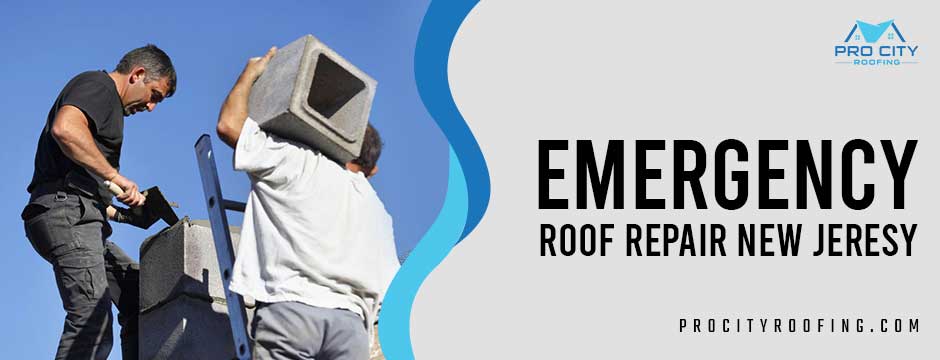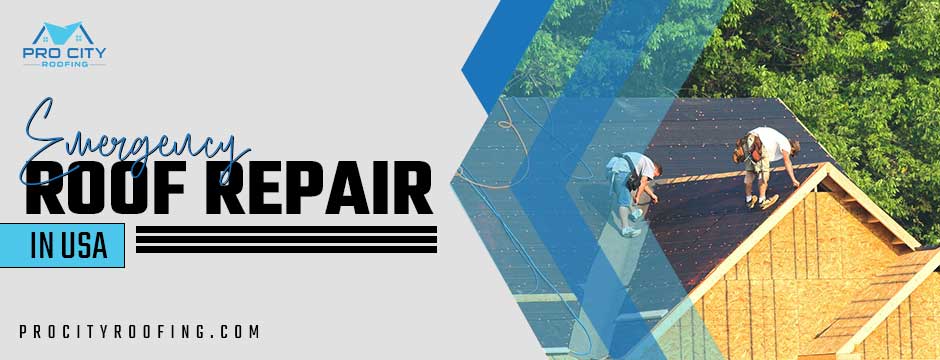As a homeowner, dealing with a damaged roof can be a daunting experience, especially when the damage requires immediate attention. Emergency roof repairs are essential to prevent further damage to your home and ensure your family’s safety. But, what should you expect during an emergency roof repair? In this blog post, we’ll provide a step-by-step guide to help you navigate through the process of an emergency roof repair.
Signs of an Emergency Roof Repair
The first step in dealing with an emergency roof repair in New Jersey is identifying the signs that indicate the need for immediate attention. Some of these signs include:
- Leaks – Water dripping from your ceiling, walls or windows is a clear indication that your roof is damaged, and repairs are needed immediately.
- Missing shingles or tiles – When shingles or tiles are missing, this exposes your roof to the elements and can lead to leaks and further damage.
- Storm damage – Severe weather conditions such as high winds, heavy rains, hailstorms or snowstorms can cause significant damage to your roof and require immediate attention.

Hiring a Professional vs. DIY
Once you’ve identified the need for an emergency roof repair, you’ll need to decide whether to hire a professional roofing contractor or attempt a DIY repair. While a DIY approach may seem appealing, it’s essential to consider the pros and cons of both options carefully.
Hiring a professional roofing contractor has many benefits, including:
- Experience and expertise – Professional roofing contractors have years of experience and expertise in handling different types of roofing repairs, ensuring that your roof is repaired correctly.
- Safety – Roofing repairs can be dangerous, especially if you’re not experienced in working at heights. Professional contractors have the necessary safety gear and equipment to ensure that the repair is done safely.
- Warranties – Most professional roofing contractors offer warranties on their work, giving you peace of mind that your repair is backed by a guarantee.
On the other hand, a DIY approach can save you money, but it comes with some risks, including:
- Lack of experience – If you’re not experienced in handling roofing repairs, you may end up causing more damage than good.
- Safety risks – Roofing repairs can be dangerous, and attempting a DIY repair without the necessary safety gear can lead to accidents and injuries.
- Time-consuming – DIY repairs can take longer than professional repairs, which can be inconvenient if you need the repair done quickly.
What to Expect During an Emergency Roof Repair
Assuming you’ve decided to hire a professional roofing contractor, here’s what you can expect during an emergency roof repair in USA:
- Initial assessment of the damage: The roofing contractor will begin by assessing the extent of the damage. They will inspect the roof’s surface, identify the cause of the damage, and determine the necessary repairs.
- Temporary repairs to prevent further damage: Once the assessment is complete, the contractor will perform temporary repairs to prevent further damage. These temporary repairs may include covering the damaged area with a tarpaulin or securing loose shingles.
- Preparing the site for repairs: The roofing contractor will then prepare the site for repairs. They will remove any debris and ensure that the area is safe for repair work.
- Materials needed for repairs: The roofing contractor will determine the materials needed for repairs, which may include new shingles or tiles, roofing felt, nails, and other supplies.
- Removal of damaged roofing materials: The damaged roofing materials will be removed, and the area will be cleaned.
- Installation of new roofing materials: Once the area is clean and free from debris, the roofing contractor will install new roofing materials to repair the damage.
- Final inspection and cleanup: After completing the repairs, the roofing contractor will conduct a final inspection to ensure that the repair work is done correctly. They will then clean up the site and dispose of any debris, leaving your property looking as good as new.

Post-Repair Maintenance
Once the repair work is complete, it’s essential to take steps to ensure that your roof stays in good condition. Regular maintenance and inspections can help identify potential issues early, allowing you to address them before they become bigger problems.
Some tips for maintaining your roof after an emergency repair include:
- Regular inspections – Inspect your roof regularly for signs of damage or wear and tear.
- Clean your gutters – Blocked gutters can lead to water damage and other issues, so it’s important to keep them clean.
- Trim overhanging branches – Overhanging branches can cause damage to your roof during storms, so make sure to trim them regularly.
- Check for leaks – After heavy rains or storms, check your attic and ceiling for any signs of leaks.
Conclusion
Dealing with an emergency roof repair can be stressful, but knowing what to expect can help make the process smoother. Hiring a professional roofing contractor, identifying the signs of an emergency repair, and regular maintenance can help keep your roof in good condition and prevent further damage. Remember, safety should always be a priority when dealing with roofing repairs, so don’t hesitate to call in the professionals if you’re unsure about handling the repair yourself. With the right steps and care, your roof can continue to protect your home for years to come. Want to find out more? Visit us at ProCity Roofing!